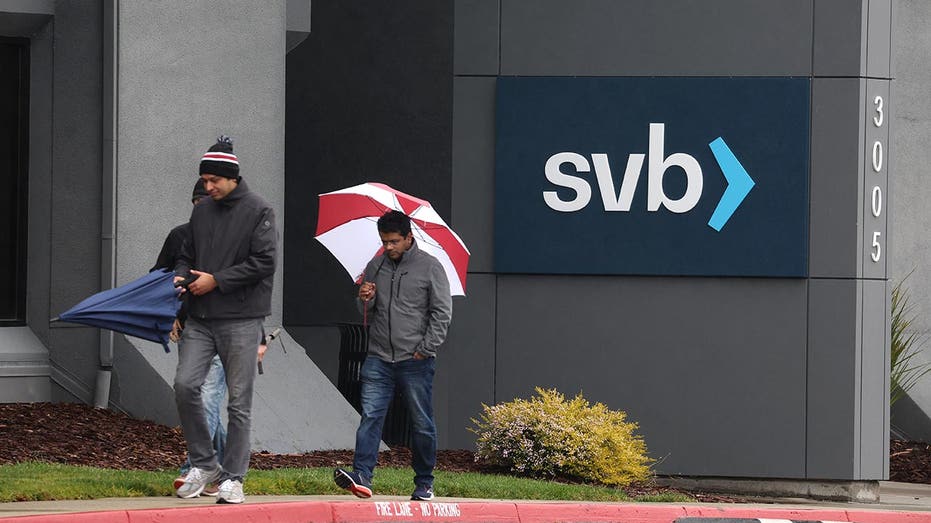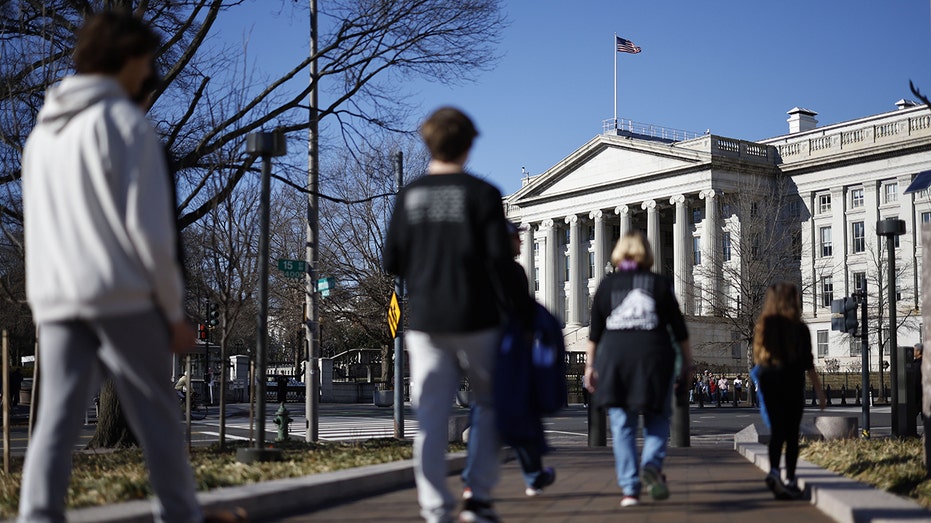Banking crisis threatens to ignite credit crunch for US households: What to know
Recession risks rise amid fears of 'credit crunch'
Fed is going to keep raising rates, Jim Rickards warns
Strategic Intelligence editor Jim Rickards discusses the Fed's decision to raise rates by 25 basis points, arguing that policymakers are "determined" to get inflation under control.
The worst banking crisis since the Great Recession could severely tighten credit for U.S. households and businesses, taking a toll on economic growth.
The turmoil that has engulfed the financial system following the stunning collapse of Silicon Valley Bank and Signature Bank has raised the prospect among economists that lending standards will become drastically more restrictive in coming months.
"Tighter conditions can happen and occur outside the official tightening of the Fed funds rate. There are so many other variables," Jeffrey Roach, chief economist at LPL Financial, told FOX Business. "A banking crisis, in essence, can tighten conditions… I think it’s fair to say that the current banking crisis could also be an equivalent to say, a 50-basis-point rate hike."
During a credit crunch, banks significantly raise their lending standards, making it difficult to acquire a loan. Borrowers may have to agree to more stringent terms like high interest rates as banks try to reduce the financial risk on their end. Fewer loans, in turn, would lead to less big-ticket spending by consumers and businesses.
FUND MANAGERS WORRY SYSTEMIC CREDIT CRUNCH COULD CRASH US MARKETS

Employees walk outside the shuttered Silicon Valley Bank (SVB) headquarters on March 10, 2023, in Santa Clara, California. (Justin Sullivan/Getty Images / Getty Images)
Gregory Daco, chief economist at the consulting firm EY-Parthenon, said he thinks tighter credit will constrain "business investment, employment growth and consumer spending in the coming months."
While that could help the Federal Reserve in its fight to tamp down stubbornly high inflation, it also raises the risk of a recession this year.
"The odds of a recession have risen due to heightened financial market volatility, tightening credit conditions and economic uncertainty," Daco said. "While labor market conditions still look relatively resilient, an abrupt shift in sentiment along with a rapid tightening of financial conditions could push the economy into a recession with businesses and consumers retrenching."
JEROME POWELL'S FAVORITE BOND MARKET GAUGE FLASHES RECESSION WARNING SIGN
Chairman Jerome Powell acknowledged during the Fed's two-day meeting last week that upheaval within the financial sector could tighten credit for American households. He suggested that stricter lending standards could have a similar effect on inflation that a rate increase can.
"Such a tightening in financial conditions would work in the same direction as rate tightening," Powell said. "You can think of it as being the equivalent of a rate hike or perhaps more than that."

Jerome Powell, chairman of the U.S. Federal Reserve, speaks during at a news conference in Washington, D.C., Wednesday, March 22, 2023. (Al Drago/Bloomberg via Getty Images / Getty Images)
His comments came shortly after policymakers delivered another quarter-percentage point rate hike, lifting the benchmark funds rate to a range of 4.75% to 5%, the highest since 2007. It marked the ninth consecutive rate increase aimed at combating high inflation.
Fed officials are in the midst of the most aggressive tightening campaign since the 1980s as they try to crush inflation still running about three times higher than the pre-pandemic average. Before the spate of bank collapses earlier in March, the Fed had considered raising rates by a half-percentage point in the face of strong economic data, Powell said Wednesday.
But fears over a broader financial crisis complicated the Fed's efforts, because the rapid rise in interest rates played a direct role in the failure of Silicon Valley Bank. Increasing interest rates threatens to exacerbate instability within the financial system. Powell said it is too soon to say how banking sector stress will affect the broader economy.
YELLEN SAYS US WILL TAKE MORE ACTION TO PROTECT SMALLER BANKS IF NEEDED
"Financial conditions seem to have tightened and probably by more than the traditional indexes say," he said. "The question for us, though, is how significant will that be – what will be the extent of it, and what will be the duration of it?
"We’ll be looking to see how serious is this and does it look like it’s going to be sustained. And, if it is, it could easily have a significant macroeconomic effect, and we would factor that into our policy decisions."

Pedestrians near the U.S. Treasury building in Washington, D.C., Dec. 30, 2022. (Ting Shen/Bloomberg via Getty Images / Getty Images)
SVB largely catered to tech companies, venture capital firms and high net worth individuals who were pulling cash at a rapid pace as the once red-hot tech sector cooled. When the bank announced it was trying to raise capital from investors and that it would take a $1.3 billion loss on long-term securities that had tumbled in value amid higher interest rates, depositors panicked and a bank run ensued.
Within days, U.S. regulators took extraordinary steps to contain the fallout from the bank's collapse and shore up wavering confidence in the financial system, including protecting all deposits at the two institutions – even those holding funds that exceeded the FDIC's $250,000 insurance limit.
CLICK HERE TO READ MORE ON FOX BUSINESS
The Fed also launched a new emergency backstop for lenders to help them meet deposit withdrawals under favorable terms.





















